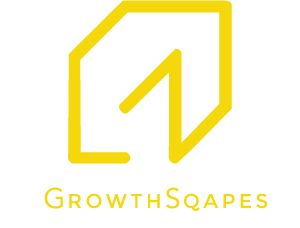Introduction
High Potential Leadership Development (HPLD) focuses on identifying individuals within an organization who exhibit exceptional potential for leadership roles and equipping them with the skills and experiences needed to succeed. These high-potential (HiPo) employees are often seen as the future drivers of organizational success. However, their potential needs to be honed through structured development programs to transform them into effective leaders.
Importance of High Potential Leadership Development
i) Securing Future Success: By investing in HPLD, organizations ensure that they have a steady supply of capable leaders ready to take on key roles as the company grows and evolves. This forward-thinking approach helps mitigate the risks associated with leadership vacancies and succession planning.
ii) Employee Retention and Engagement: Providing growth opportunities to high-potential employees boosts their engagement and loyalty, reducing turnover rates. HiPo employees are more likely to stay with a company that invests in their future, leading to lower recruitment costs and a more stable workforce.
iii) Competitive Advantage: Organizations with a robust pipeline of leaders can adapt more swiftly to market changes, maintaining a competitive edge. These companies are better positioned to innovate, seize new opportunities, and navigate challenges effectively.
Identifying High-Potential Employees
The first step in HPLD is to accurately identify high-potential employees. This process typically involves:
i) Performance Reviews: Regular evaluations that highlight consistent high performance. Managers should look for employees who not only meet their targets but also exceed expectations consistently over time.
ii) Competency Assessments: Measuring key competencies such as strategic thinking, emotional intelligence, and adaptability. These assessments can include various methods, such as competency-based interviews, situational judgment tests, and behavioral assessments.
iii) Leadership Assessments: Tools like 360-degree feedback and psychometric tests to gauge leadership potential. These assessments provide a comprehensive view of an employee’s capabilities from multiple perspectives, including peers, subordinates, and supervisors.
Characteristics of High-Potential Employees
i)Drive and Ambition: A strong desire to succeed and take on challenges. HiPo employees are often proactive, seeking out new responsibilities and opportunities to demonstrate their capabilities.
ii) Learning Agility: The ability to quickly learn and apply new skills and knowledge. These individuals are adaptable, open to feedback, and continuously look for ways to improve their performance.
iii) Emotional Intelligence: Strong interpersonal skills and the ability to manage one’s emotions and those of others. HiPo employees excel in communication, empathy, and conflict resolution, fostering positive working relationships.
iv) Strategic Thinking: The capability to think ahead, plan strategically, and navigate complex situations. They can envision the bigger picture, set long-term goals, and develop innovative solutions to achieve them.
Components of an Effective High Potential Leadership Development Program
Individual Development Plans (IDPs)
Each HiPo employee should have a customized development plan that outlines their strengths, areas for improvement, and career aspirations. IDPs should include:
Goals and Objectives: Clear, measurable goals aligned with the organization’s strategic objectives. These goals should challenge the employee and encourage continuous growth.
Development Activities: A mix of training, mentoring, coaching, and on-the-job experiences. Development activities should be diverse and designed to build both technical and leadership skills.
Mentoring and Coaching
Mentoring and coaching are critical elements in developing high-potential leaders. These relationships provide HiPo employees with:
a) Guidance and Support: Experienced mentors and coaches offer valuable insights and advice. They can help HiPo employees navigate career challenges and make informed decisions.
b) Skill Development: Focused coaching on specific leadership skills and competencies. This targeted approach ensures that HiPo employees develop the skills most relevant to their future roles.
c) Networking Opportunities: Building connections within the organization and industry. Mentors and coaches can introduce HiPo employees to key stakeholders and potential collaborators.
Structured Training Programs
Structured training programs, such as leadership workshops and seminars, are essential for developing key leadership skills. These programs should cover topics like:
a) Leadership and Management Skills: Decision-making, conflict resolution, and team management. Training should equip HiPo employees with the tools they need to lead effectively.
b) Emotional Intelligence: Self-awareness, empathy, and relationship management. Enhancing emotional intelligence helps HiPo employees build stronger teams and foster a positive workplace culture.
c) Strategic Thinking and Innovation: Scenario planning, critical thinking, and fostering a culture of innovation. Training should encourage HiPo employees to think creatively and strategically.
Rotational Assignments
Providing high-potential employees with rotational assignments across different functions or geographies helps them gain a holistic understanding of the business and develop a broad skill set. These assignments:
i) Enhance Cross-Functional Knowledge: Exposure to various departments and roles. Rotational assignments help HiPo employees understand how different parts of the organization work together.
ii) Develop Flexibility and Adaptability: Learning to manage diverse teams and environments. These experiences prepare HiPo employees to handle various leadership challenges.
iii) Broaden Perspective: Understanding different aspects of the business and market dynamics. Rotational assignments provide a well-rounded view of the organization and its industry.
Feedback and Evaluation
Regular feedback and evaluation are crucial to ensure that high-potential employees are on the right track. This involves:
a) Continuous Feedback: Regular check-ins and constructive feedback from managers and mentors. Ongoing feedback helps HiPo employees stay aligned with their development goals.
b) Performance Metrics: Setting and measuring against specific performance indicators. Clear metrics provide a tangible way to track progress and identify areas for improvement.
c) Progress Reviews: Periodic reviews to assess progress and adjust development plans as needed. These reviews ensure that development plans remain relevant and effective.
To Conclude
High Potential Leadership Development is a strategic imperative for organizations aiming to secure their future success. By identifying, nurturing, and retaining high-potential employees, businesses can build a robust pipeline of leaders ready to navigate the complexities of the modern business world. An effective High Potential Leadership Development program, aligned with organizational goals and focused on continuous learning and development, ensures that these future leaders are well-equipped to drive growth and innovation. Investing in High Potential Leadership Development not only prepares the organization for future challenges but also creates a culture of excellence and continuous improvement. As one of the best corporate training companies in India doing leadership development programs in India and Asia, GrowthSqapes has robust frameworks and global experience & know-how to deliver the same.
This blog has been written by Satyakki Bhattacharjee, Managing Partner – GrowthSqapes


